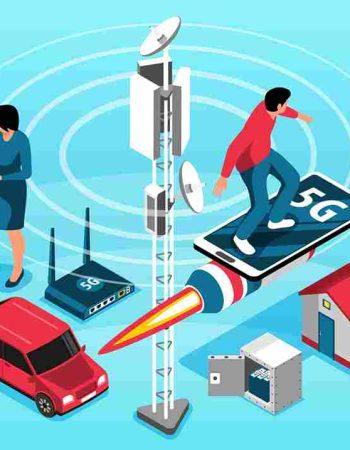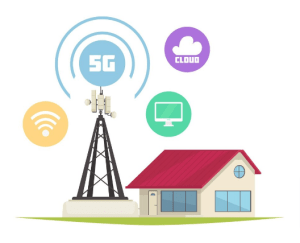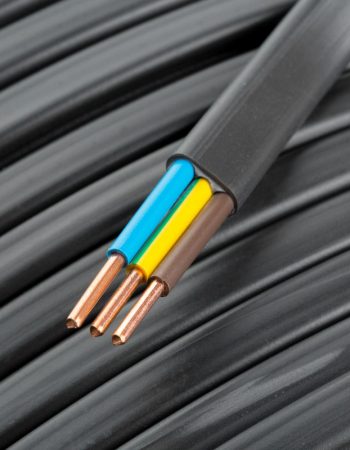In today’s connected world, a strong cell signal is essential for staying connected, whether you are at home or office. A cell signal booster is designed to improve the signal strength of your existing networks. They improve the overall call quality, signal strength, and data speeds.
Proper installation ensures your cellular booster functions properly as well as boosts the network signal. However, if you have never had or used one before, you may not know the necessary steps for cell signal booster installation. When components like your outdoor and indoor ones remain too close, the booster cannot function properly. In this blog, we’ll explore everything about cell signal boosters from scratch. Also how they benefit and the installation process itself.
Understanding Cell Signal Boosters
Cellular signals are radio waves that cover great distances, but they are also easily affected. Ever seen people running outside or getting near a window for a call because of removing interference. Basically, they are designed to improve cellular coverage by amplifying weak signals and redistributing them throughout a building or area. They involve three components: an outdoor and indoor antenna and an amplifier.
Together these elements work to capture, amplify and rebroadcast cellular signals and extend the coverage effectively. Cell towers are an important element that allows the transmission and reception of cellular signals from different distances to the nearest towers impacting the signal strength significantly. Signals are generally measured in decibel-milliwatts that indicate signal strength.
Why Should You Consider It?
Improve Strength and Call Quality
A cell booster installation at your workplace allows strong coverage and signal strength that allows users to make calls, send text, and access data more reliably. It is an effective solution for dropped calls and lost signal problems, extending your cell signal reach within your home, office, or building.
Cell signal boosters and structured cabling combine to establish a stronger signal so that the user can enjoy a clearer voice class and fewer dropped calls. Resulting in a better calling and connecting with each other at the workplace. Quality streaming, voice, and video calls will help you finish the meeting on time and boost the overall productivity of your workforce.
Faster Speed and Extended Area
A stronger cell signal means faster data speed, enabling quick downloads, smoother streaming, and better performance for data-ferocious operations. It allows you to work with confidence no matter what the task or position.
Cell signal boosters can extend cellular content to areas with poor or no signal, similar to basements, remote locales, or structures with thick walls or metal construction. However, it also offers peace of mind as you have a dependable signal when you need it most, and a signal supporter can handle rising cellular frequency that ensures long-term connectivity.
The Installation Process
- Finding a strong outdoor signal and Installing an Outdoor Antenna. This is crucial! Use a signal strength meter app to locate the spot with the strongest cellular signal outside your building (often on the roof or high on an exterior wall). Mount the outdoor antenna at the location identified in the first process. Ensure proper weatherproofing and secure mounting to withstand different weather conditions.
- Connecting the cable and Positioning Amplifier. Identify suitable locales for the out-of-door and inner antennas. The out-of-door antenna should be placed in an area with the strongest available signal, while the inner antenna should be deposited in the area where better content is demanded most.
- Connecting the inner antenna and the out-of-door antenna to the signal supporter using the handed coextensive string. also, connect the inner antenna to the signal supporter using another coextensive cable. Seek guidance from experts for structured cabling according to needs and requirements.
- Power up and test, power on the signal booster and monitor signal strength using a cell phone or signal metre. Plug in the amplifier and power it on. Adjust antenna placement as needed to optimise signal strength and coverage. Ask professionals to test and show you that the installation is working fine.
Additional Consideration
While some boosters are designed for self-installation, consider the complexity of your setup and your comfort level. Professional installation can ensure optimal performance and avoid potential errors. According to your size of workplace choose the type of antenna and broadcast a signal 360 degrees. On the other hand, panel antennas work best in narrow arrears and typically have more gain.
Cell signal boosters operate under specific Federal Communications Commission (FCC) regulations. Ensure your chosen booster is FCC-approved and operate it within the legal guidelines. Choose a booster compatible with your cellular carrier’s network frequency.
Remember: Do proper research to make an informed decision and choose a reputable provider like Porter Tech to get the job done perfectly. Refer to the user manual and installation guide or see video tutorials provided by manufacturers to ensure smooth functioning.
Final Words
After this detailed content, we can conclude that cell signal boosters are an invaluable tool for improving signal coverage and strength with weak or spotty signals. With the ability to amplify signals and extend coverage, it also offers a range of benefits for residential and commercial users alike.
By understanding how it works and why it is beneficial for your workplace, you can enjoy improved cell coverage, improved call quality, and faster data speed wherever you go. It is recommended to choose and contact a reputable provider like Porter Tech, with an experienced team and essential tools in their pocket they can do the installation effectively and efficiently. Say goodbye to dropped calls and slow internet, install a cell signal booster today, and stay connected wherever life takes you!







[…] Also Read: Cell Signal 101: Everything You Need to Know About Cell Signal Booster Installation […]